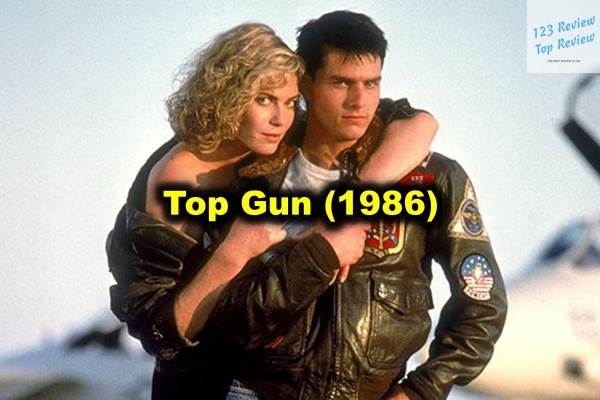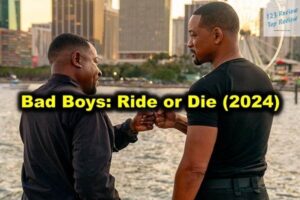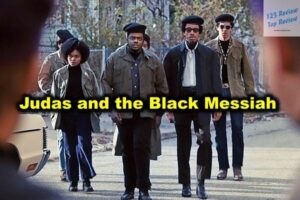“Top Gun (1986)” is a classic action film that has left an indelible mark on pop culture. In this article, 123 Review delves into the movie’s iconic status, exploring its thrilling aerial combat scenes, memorable soundtrack, and charismatic performances, particularly by Tom Cruise. We also examines the film’s impact on 1980s cinema, its influence on military recruitment, and the enduring legacy that has led to its 2022 sequel, “Top Gun: Maverick.” Whether you’re a longtime fan or a newcomer, this article provides a comprehensive look at what makes “Top Gun” a timeless piece of cinematic history.
Overview of Top Gun
“Top Gun,” released in 1986, is a film that not only defined a generation but also left an indelible mark on popular culture. Directed by Tony Scott and produced by the powerhouse duo of Don Simpson and Jerry Bruckheimer, “Top Gun” is a high-octane action-drama that combines thrilling aerial combat, a compelling love story, and an unforgettable soundtrack. The film stars Tom Cruise as Pete “Maverick” Mitchell, a talented but reckless Navy pilot who is selected to attend the Navy’s elite Fighter Weapons School, also known as “Top Gun.”

The film’s storyline is deceptively simple yet profoundly impactful. Maverick, who is haunted by the legacy of his father—a pilot who mysteriously disappeared during the Vietnam War—seeks to prove his worth in a high-pressure environment where only the best survive. His journey through the Top Gun program is marked by intense rivalries, personal loss, and a romance that challenges his views on life and love. Through its vivid characters and dynamic plot, “Top Gun” delves into themes of heroism, competition, and the quest for identity, all set against the backdrop of the Cold War era.
Key Themes in Top Gun
At its core, “Top Gun” is a film about competition and the relentless pursuit of excellence. The characters are constantly pushed to their limits, both physically and mentally, as they strive to be the best in a field where the stakes couldn’t be higher. This theme is embodied in the film’s iconic tagline: “I feel the need… the need for speed!” This pursuit of greatness is not without its costs, as the characters grapple with the fear of failure, the weight of expectations, and the harsh realities of life as a fighter pilot.
Another central theme in “Top Gun” is the tension between individuality and teamwork. Maverick, with his maverick (pun intended) approach to flying, often finds himself at odds with the more disciplined and rule-bound pilots like Tom “Iceman” Kazansky, played by Val Kilmer. This conflict highlights the broader theme of the balance between personal freedom and the necessity of following orders in a highly structured and hierarchical environment like the military.
The film also explores themes of loss and redemption. Maverick’s journey is shaped by the loss of his father and later, the tragic death of his best friend and Radar Intercept Officer (RIO), Nick “Goose” Bradshaw, portrayed by Anthony Edwards. These losses force Maverick to confront his own vulnerabilities and ultimately lead to his personal growth and redemption.
Cultural Impact of Top Gun
The cultural impact of “Top Gun” is vast and multifaceted. Upon its release, the film became an instant cultural phenomenon, influencing everything from fashion to music to military recruitment. The film’s portrayal of naval aviation glamorized the life of a fighter pilot, leading to a significant increase in Navy enlistments. The U.S. Navy even set up recruitment booths outside theaters showing the film, capitalizing on the film’s popularity to attract new recruits.
Fashion trends from the film, such as Maverick’s aviator sunglasses and bomber jacket, became iconic symbols of cool, further embedding “Top Gun” into the fabric of 1980s pop culture. The film’s dialogue, particularly lines like “I feel the need… the need for speed!” and “Your ego is writing checks your body can’t cash,” has also become part of the cultural lexicon, quoted and referenced in various media and everyday conversations.
Moreover, “Top Gun” played a significant role in establishing Tom Cruise as a global superstar. His portrayal of Maverick, with his boyish charm, cocky attitude, and undeniable charisma, made him a household name and set the stage for a long and successful career in Hollywood.
Audience Reception and Critique
“Top Gun” was a commercial juggernaut, grossing over $350 million worldwide and becoming the highest-grossing film of 1986. Audiences were captivated by its thrilling aerial sequences, charismatic performances, and the chemistry between its leads. The film’s blend of action, romance, and drama appealed to a wide demographic, making it a box office sensation.
However, the film received a mixed reception from critics. While many praised its groundbreaking aerial photography, slick direction, and the star power of Tom Cruise, others were less enthusiastic. Some critics argued that the film’s plot was thin and formulaic, with character development taking a backseat to flashy visuals and patriotic fervor. The film was also criticized for its heavy reliance on military propaganda, with some viewing it as a recruitment tool for the U.S. Navy.
Despite these critiques, “Top Gun” has endured as a beloved classic. Its flaws are often overshadowed by its sheer entertainment value and its ability to evoke a sense of nostalgia for the 1980s. Over time, the film’s influence on popular culture and its role in shaping the modern action film genre have only grown, solidifying its place in cinematic history.
Character Analysis
Maverick: The Protagonist’s Journey
Pete “Maverick” Mitchell is the quintessential 1980s action hero—a character defined by his bravado, recklessness, and undeniable talent. Maverick’s journey in “Top Gun” is one of self-discovery and growth. At the beginning of the film, Maverick is portrayed as a highly skilled but impulsive pilot who often disregards rules and authority. His need to prove himself, driven by the mysterious circumstances surrounding his father’s death, pushes him to take risks that endanger both himself and his colleagues.
As the film progresses, Maverick’s character is tested in various ways. The death of his best friend and RIO, Goose, is a turning point in the film and in Maverick’s life. This tragic event forces Maverick to confront his own mortality and the consequences of his actions. It is through this loss that Maverick begins to mature, realizing that being a great pilot is not just about skill and bravery but also about responsibility and teamwork.
By the end of the film, Maverick emerges as a more balanced and self-aware individual. He learns to channel his talent in a way that benefits not just himself but also those around him. His reconciliation with Iceman and his decision to stay in the Navy as an instructor signal his acceptance of his role as a leader and mentor, a significant evolution from the reckless young pilot we meet at the beginning of the film.
Iceman: The Antagonist’s Role
Tom “Iceman” Kazansky, portrayed by Val Kilmer, serves as Maverick’s primary rival at the Top Gun school. Iceman is the polar opposite of Maverick—where Maverick is impulsive and emotional, Iceman is cool, calculated, and by-the-book. His nickname, “Iceman,” reflects his precise and disciplined approach to flying, as well as his cold demeanor.
Iceman’s character plays a crucial role in highlighting the film’s central theme of competition. He represents the standard of excellence that Maverick strives to surpass. However, unlike typical antagonists, Iceman is not portrayed as a villain. Instead, he is a foil to Maverick, embodying the qualities of a successful pilot within the rigid structure of military discipline.
The tension between Maverick and Iceman drives much of the film’s drama. Their rivalry is intense, fueled by a mutual desire to be the best. Yet, this rivalry also pushes both characters to improve. By the end of the film, after the final dogfight, Iceman acknowledges Maverick’s skill and bravery, leading to a mutual respect that signifies Maverick’s acceptance into the Top Gun community. This resolution of their rivalry underscores the film’s message that true greatness comes not just from individual talent but also from the ability to work together and learn from one another.
Supporting Characters and Their Impact
While Maverick and Iceman are the central figures in “Top Gun,” the supporting characters play vital roles in shaping the narrative and adding depth to the story.
Nick “Goose” Bradshaw, Maverick’s RIO and best friend, is perhaps the most significant supporting character. Goose’s easygoing nature and unwavering loyalty provide a counterbalance to Maverick’s intensity. Their camaraderie is one of the film’s emotional anchors, making Goose’s death all the more devastating. Goose’s death serves as the catalyst for Maverick’s transformation, forcing him to reassess his approach to flying and life.
Charlotte “Charlie” Blackwood, played by Kelly McGillis, is Maverick’s love interest and a civilian instructor at Top Gun. Charlie is an intelligent and confident woman who challenges Maverick both professionally and personally. Their relationship adds a layer of complexity to the film, as it intertwines Maverick’s professional aspirations with his personal desires. Charlie’s influence on Maverick is significant, helping him to mature and find a balance between his daring nature and the discipline required to be a great pilot.
Other supporting characters, such as Commander Mike “Viper” Metcalf (Tom Skerritt) and Lieutenant Commander Rick “Jester” Heatherly (Michael Ironside), serve as mentors to Maverick and the other pilots. Viper, in particular, is a father figure to Maverick, offering wisdom and guidance that helps Maverick come to terms with his father’s legacy and his own place in the Navy. These characters contribute to the film’s exploration of themes like mentorship, legacy, and the passage of wisdom from one generation to the next.
Cinematic Techniques
Direction and Visual Style
Tony Scott’s direction in “Top Gun” is a masterclass in creating visual spectacle. Scott, known for his distinctive visual style, employed a range of techniques to give the film its dynamic and polished look. The film’s use of dramatic lighting, with sunsets, silhouettes, and lens flares, creates a visually stunning atmosphere that enhances the overall mood and tone.
Scott’s use of dynamic camera angles and movement adds to the film’s sense of energy and excitement. The aerial combat scenes, in particular, benefit from Scott’s innovative approach to cinematography. He used a combination of wide shots, close-ups, and point-of-view angles to immerse the audience in the action, making them feel as though they are right there in the cockpit with the pilots.
The visual style of “Top Gun” also reflects the film’s themes of speed, competition, and the pursuit of excellence. The sleek, fast-paced visuals mirror the high-stakes world of fighter pilots, where every decision is a matter of life and death. Scott’s direction ensures that the film is not just a collection of thrilling action sequences but a cohesive and visually compelling narrative.
Editing Techniques in Action Sequences
The editing in “Top Gun” is one of its standout features, particularly in the way it handles the action sequences. The film’s aerial combat scenes are edited with a precision that mirrors the skill of the pilots themselves. Rapid cuts between different camera angles, including cockpit views, wide shots of the aircraft in flight, and close-ups of the pilots’ faces, create a sense of urgency and intensity.
The editing techniques used in “Top Gun” were groundbreaking at the time. The fast-paced cuts and quick transitions between shots were designed to keep the audience on the edge of their seats, heightening the tension and excitement of the dogfights. This approach to editing was not only effective in creating thrilling action scenes but also influenced the way action films were edited in the years that followed.
The film’s editors, Billy Weber and Chris Lebenzon, also made use of match cuts to seamlessly transition between scenes, maintaining the film’s momentum. For example, the transition from a high-speed aerial maneuver to a quiet moment between characters is handled with precision, ensuring that the film’s pacing remains fluid and engaging.
Use of Sound and Music in Enhancing Experience
The sound design and music in “Top Gun” are integral to the film’s identity and its impact on the audience. From the thunderous roar of jet engines to the tension-filled radio communications during dogfights, the film’s sound design immerses the viewer in the world of naval aviation.
The film’s soundtrack, composed by Harold Faltermeyer, is one of the most iconic in film history. The main theme, “Top Gun Anthem,” with its soaring electric guitar riffs, perfectly captures the film’s themes of heroism and adventure. The soundtrack also features a number of memorable songs, including Kenny Loggins’ “Danger Zone,” which became synonymous with the film and is used during the high-energy flight sequences.
The use of music in “Top Gun” is not just for background ambiance but is carefully integrated into the film’s narrative. Songs like “Take My Breath Away” by Berlin underscore the romantic scenes between Maverick and Charlie, adding emotional depth to their relationship. Meanwhile, the upbeat “Playing with the Boys” is used during the iconic beach volleyball scene, highlighting the camaraderie and competitive spirit among the pilots.
The soundtrack’s success extended beyond the film, topping the charts and becoming one of the best-selling soundtracks of all time. It also won an Academy Award for Best Original Song for “Take My Breath Away,” further cementing its place in film history.
Aerial Combat Scenes
Choreography of Dogfights
The dogfights in “Top Gun” are some of the most exhilarating and well-choreographed aerial combat scenes ever filmed. The choreography of these scenes was meticulously planned to showcase the skill and precision required in air combat. The film’s dogfights are not just random displays of flying prowess but are carefully structured to build tension and excitement.
The choreography emphasizes the physical and mental demands placed on the pilots. The tight turns, high-speed maneuvers, and sudden changes in altitude and direction are all executed with precision, reflecting the intense training and discipline of the pilots. The film also highlights the importance of teamwork in these dogfights, with the pilots relying on their RIOs and each other to succeed in combat.
The dogfights are also used to develop the film’s characters. For example, Maverick’s aggressive flying style is evident in the way he takes risks during the dogfights, often pushing his aircraft to its limits. In contrast, Iceman’s more cautious and calculated approach is reflected in his flying, where he avoids unnecessary risks and focuses on maintaining control. These differences in flying styles are not just about the action but also serve to deepen our understanding of the characters and their motivations.
Technical Marvels: Filming Aerial Action
Filming the aerial action in “Top Gun” was a technical marvel that required innovation and collaboration between the filmmakers and the U.S. Navy. The filmmakers used real Navy aircraft, including the F-14 Tomcat, to capture the authenticity of naval aviation. The use of actual fighter jets added a level of realism to the film that was unprecedented at the time.
To film the aerial sequences, the filmmakers employed specialized camera rigs and techniques. For instance, they used gyro-stabilized cameras mounted on the aircraft to capture smooth, stable shots during high-speed maneuvers. The filmmakers also worked closely with Navy pilots to choreograph the aerial stunts, ensuring that the action was both realistic and visually spectacular.
One of the most impressive technical achievements in the film was the use of aerial cinematography to convey the speed and intensity of air combat. The filmmakers used a combination of wide-angle lenses and high-speed cameras to capture the action from multiple perspectives, creating a sense of immersion for the audience. This approach allowed the filmmakers to convey the sheer scale and power of the aircraft, as well as the skill and precision required to pilot them.
The technical achievements of “Top Gun” set a new standard for aerial cinematography and influenced the way future films approached action sequences. The film’s success in capturing the excitement and danger of air combat helped to solidify its place as a landmark in action cinema.
The Role of Aircraft in Plot Development
In “Top Gun,” the aircraft are more than just tools of war; they are extensions of the characters themselves and play a significant role in the film’s plot development. The F-14 Tomcat, in particular, is closely associated with Maverick, symbolizing his rebellious nature and his desire to push boundaries. The aircraft’s advanced capabilities reflect Maverick’s own skill and potential as a pilot.
The aircraft also serve as symbols of the characters’ journeys. For example, Maverick’s struggle to control his F-14 during a flat spin after Goose’s death symbolizes his internal turmoil and loss of confidence. It is only when Maverick regains control of his aircraft in the final dogfight that he truly overcomes his fears and redeems himself as a pilot.
The role of the aircraft in the film’s plot is further emphasized by the way the dogfights are used to advance the story. Each dogfight serves as a pivotal moment in the narrative, with the outcome of the battles directly affecting the characters’ relationships and development. The aircraft become a vehicle (literally and metaphorically) for the characters to confront their challenges, make decisions, and ultimately grow.
Love Story Elements
Romantic Dynamics between Maverick and Charlie
The romance between Maverick and Charlotte “Charlie” Blackwood is a key subplot in “Top Gun” that adds depth to the film’s narrative. Their relationship is marked by both professional and personal tension, as Charlie is an astrophysicist and civilian instructor at Top Gun, while Maverick is one of her students.
The romantic dynamics between Maverick and Charlie are complex and multifaceted. Initially, their relationship is defined by a mutual attraction, but also by Charlie’s professional authority over Maverick. This power dynamic creates tension between them, as Maverick struggles to reconcile his feelings for Charlie with his desire to succeed at Top Gun.
As their relationship develops, Charlie becomes a stabilizing influence on Maverick. She helps him to see the bigger picture and encourages him to embrace the discipline and responsibility that come with being a fighter pilot. Their romance is not just a distraction from the main plot but is intricately woven into Maverick’s character arc, contributing to his growth as both a pilot and a person.
The chemistry between Tom Cruise and Kelly McGillis adds to the believability of their relationship. Their on-screen interactions are filled with tension, passion, and vulnerability, making their romance one of the more memorable aspects of the film. The iconic scene in which Maverick serenades Charlie with “You’ve Lost That Lovin’ Feelin'” has become one of the most enduring moments in romantic cinema.
The Impact of Personal Relationships on Character Development
In “Top Gun,” personal relationships play a significant role in the characters’ development, particularly in the case of Maverick. His relationships with Goose, Charlie, and Iceman all contribute to his journey from a reckless, hotshot pilot to a more mature and responsible leader.
Goose’s friendship with Maverick is one of the film’s emotional centers. Goose’s loyalty and support provide Maverick with a sense of stability and grounding. Goose’s tragic death is a turning point for Maverick, forcing him to confront his own fears and insecurities. This loss is what ultimately drives Maverick to change, leading to his growth as a character.
Maverick’s romance with Charlie also plays a crucial role in his development. Charlie’s influence helps Maverick to see the value in discipline and responsibility, pushing him to become a better pilot and person. Their relationship is a catalyst for Maverick’s transformation, as he learns to balance his desire for freedom with the need for structure and order in his life.
The rivalry with Iceman is another important relationship that impacts Maverick’s development. While the two pilots are initially at odds, their rivalry ultimately pushes Maverick to improve. Iceman’s respect for Maverick at the end of the film signifies Maverick’s acceptance into the Top Gun community and his recognition as a true leader.
Comparisons to Other Romantic Subplots in 80s Cinema
The romantic subplot in “Top Gun” is emblematic of the 1980s cinema, where romance often played a significant role in action and drama films. In many ways, the relationship between Maverick and Charlie follows the formulaic structure of 1980s romantic subplots, with an initial attraction, a period of tension or conflict, and a resolution that reinforces the protagonist’s growth.
However, “Top Gun” distinguishes itself from other romantic subplots of the era through its integration of the romance into the broader themes of the film. Unlike some 80s action films where the romance feels tacked on or secondary to the main plot, the romance in “Top Gun” is integral to Maverick’s character development and the film’s overall narrative. This integration makes the romance more meaningful and impactful, contributing to the film’s lasting appeal.
When compared to other 80s films like “An Officer and a Gentleman” or “Dirty Dancing,” the romance in “Top Gun” stands out for its blend of passion and professional tension. While the other films also explore themes of love and personal growth, “Top Gun” places its romance within the unique context of military life and the high-stakes world of naval aviation. This setting adds a layer of complexity to the relationship, as the characters must navigate their feelings in an environment where emotions can be a liability.
Conclusion
“Top Gun” is more than just a film about fighter jets and aerial combat; it is a multifaceted narrative that explores themes of competition, loss, love, and redemption. Through its dynamic characters, thrilling action sequences, and memorable soundtrack, “Top Gun” has cemented its place in cinematic history as an iconic 1980s film.
The film’s impact on popular culture, from fashion to military recruitment, is a testament to its enduring appeal. Its blend of action, romance, and drama has resonated with audiences for decades, making it a classic that continues to be celebrated and referenced in various forms of media.
While “Top Gun” may have its critics, its influence on the action film genre and its role in shaping the careers of its stars cannot be denied. The film remains a quintessential example of 1980s cinema, capturing the spirit of the era with its larger-than-life characters, high-stakes drama, and unforgettable moments.
As we reflect on “Top Gun” nearly four decades after its release, it is clear that the film’s legacy is as strong as ever. Whether you’re a fan of action films, romance, or simply great storytelling, “Top Gun” offers something for everyone. It is a film that invites viewers to strap in, take to the skies, and experience the thrill of flying high with Maverick and his fellow pilots—a cinematic ride that never loses its edge.




